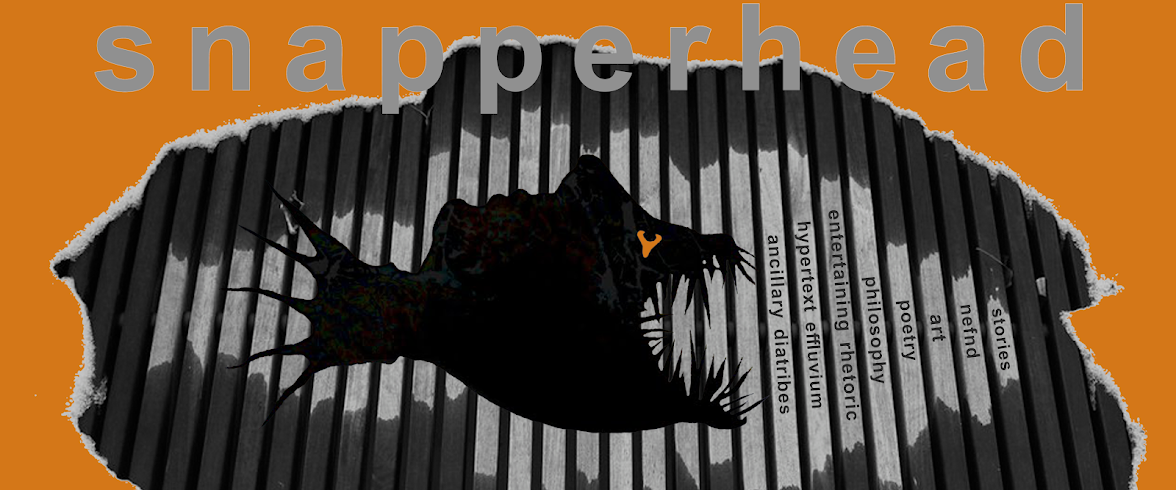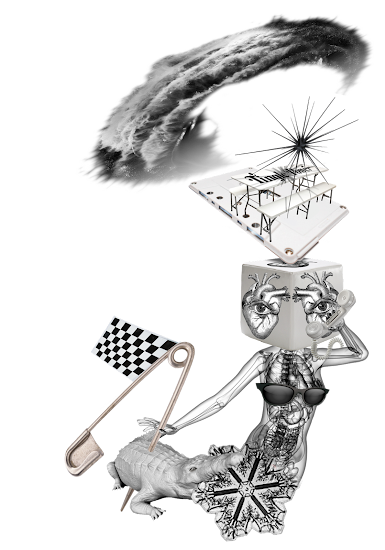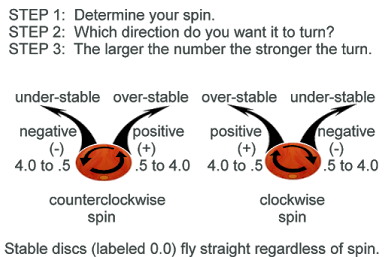
“That’s hard to answer. Explaining it (
untitled portrait of self) or—worse—attempting to outline what I hope others see or feel when looking at it, will—I fear—ossify its meaning.”
“You think its meaning changes over time?”
“Each view a new set of eyes, each viewer a new set of preconceived ideas. Let me provide an example.
“Stanley Kubrick’s film,
2001: A Space Odyssey, begins with an ape touching a black monolith and then using a bone as a weapon which he tosses in the air; the camera closes on the bone which morphs into a spaceship tumbling through space. Two hours of film later, the protagonist learns about a monolith in space, approaches it, and is sucked into a tunnel of light, then there are a series of images of him in a white room, another monolith, and the film ends with an embryo floating in space near earth. What does this film—specifically the beginning and ending—mean?”
“I always thought Kubrick was being intentionally abstruse.”
“After reading Arthur C. Clark’s original story and a subsequent article written by Harlan Ellison about them, I can provide this information: The monoliths are of alien origin. The first one imbued proto-humans with reason; when we uncovered the second monolith on the moon, it sent a beacon to a third orbiting Jupiter; once we became sufficiently advanced to follow the beacon, the aliens instil/infect/teach/decode-encode the protagonist (over time...the length of which is relative) and return him to earth in the form of a hybrid alien-human embryo.
Although this doesn’t alter Kubrick’s intentional abstruseness, the plot is less confusing. Right?”
“Yes...if that’s the real explanation then...”
“Your reluctance to completely accept this explanation as The One And Only says—to me—that you might prefer some uncertainty. Abstract is attractive. When a magician slows down and lets you behind the curtain it’s less exciting than watching a building under construction. One board at a time. One nail at a time.”
“Except—and this is a big except—sometimes I don’t
get art. At all. This is one of those times. When I’m confused by something I ask for an explanation. Although I empathize with your reluctance...I'd—still—like you to expound. You spent hundreds of hours on it. It means something to you. I want to know what that is. Please?”
“...Ok. I'm not adverse to an art
deconstruction-explanation. First, can you tell me what you feel when looking at it?”
“Dark. There’s so much going on I can’t focus on... Bizarre. Clearly you’re heterosexual. I don’t know. It’s disturbing. I’m sorry, I don’t know.”
“Thank you. Those are the initial reactions I was striving for.
“When people view things they consider “
beautiful” (in quotes because one person’s adorable is the next’s deplorable) their brain chemically encourages them to continue this behavior. The more beautiful the view, the less active the brain becomes. You are calm. Comfortable. Serene even. Conversely, looking at things considered ‘
ugly’ is chemically discouraged. In these instances, the brain initiates a ‘run away’ impulse (as if it were seeing a previously un-experienced and unidentified unknown). During these times the brain is extremely active. The ‘what does it mean’ message, however, becomes secondary to the ‘will never understand so stop trying’ message.”
*
“And, you want viewers of your artwork—their brains—to
want to stop looking at your art?”
“Umm, yes. In a nutshell, initially, that would be an accurate statement.”
“Seems counter-intuitive.”
“Your average everybody—the facebook masses—don’t intentionally view art. Not unless it has a cat in it, a bird on it, or a corporate stamp of approval around it. Those who do are, mostly, other artists or those with the
eye of an artist and they all understand the initial ‘run away’ impulse indicates ‘deserves further consideration.’ This is not to imply everything intentionally gonging the ugly bell is good.
“I think there are many times the power of much (abbrev: m
xm) bad-boring-beautiful artworks in the world; slightly less falls into the bad-ugly category; then comes all the good-beautiful and least numerous (because it’s beginning the creative process in expert mode) is good-ugly.
“I know this work is ugly. And I think it’s good. And before you say ‘of course, it’s your own.’ Know this: I only think about 20% of my own is good.”
“I understand what you’ve said so far.”
“So. Here goes something snapperheaded.
“I began with a title:
Untitled Portrait of Self, which is—obviously—paradoxymoronic.
“Artists leave their work untitled because they:
- Desire not to pre-influence their viewers in any way (Jasper John’s Untitled I).
- Prefer their audience to use their own labels (many Keith Haring’s are blank. He began as a street-artist...to title graffiti is like naming the embryo you intend to abort).
- Think their work requires no title (Andy Warhol’s [no title] Marilyn prints).
“I dislike untitled art. It’s lazy. You end up with conversations like, ‘What did you think of the Jasper Johns...the...ah...crosshatch one with the white background?’ ‘I bought a Haring print...the one with the numbers and the barking dog.’ ‘I like some of Warhol’s but I can’t explain the difference between the good-ugly and the bad-ugly ones, sorry.’
“Self portraits are my least favorite type of art. ...
can’t think of anything to draw, think I’ll get out a mirror... All shit—just like
films about film-makers and stories about writers.
“Then I upped my difficulty level three-fold:
- Black, white, and grey because mxm of my previous work is color.
- Representational image because ditto abstract expressionism.
- Only tell my true story. Any other portrayal of self would be a sham.”
“I guess that explains why it took you almost a year to create it.”
“That’s very true.
“I began with the tube of paint. My artist-symbol. The human brain on the tube could be a label (as in: contains my imagination) or it could be resting on top (if so, then either the tube is immense or the brain is minuscule).
“The raptor claw beginning to twist off the cap is both visual metaphor and visual motion. I admire every small flying dinosaur. The four talons draw the viewer’s eye toward the cap; a tiny dog tag inscribed
Veach Glines,
O pos,
Athiest, hangs from the only talon with a hidden tip (one item of
many worn during my career).
“Atheist is misspelled...I'm a bad speller. When filling out the application for my ID tags in 1982, the choices were catholic, jewish, islamic, hindu, and no pref; atheist wasn't an option. At the time I figured it was a typical example of government homogenization. Later, I learned my No Pref label was for the corpse-handlers (guess I should have changed it to hindu; cremation...less fuss, less mess, less space, less cost). The silenced ID tag (the rubber around it prevented them from clinking) reflects the encumber-impairment a job—any job—had/has on the creative juices. (Feel free to draw additional analogous references from words in that sentence and my disdain of spawn. [Hmm...I quite enjoy the verbiage of this parenthetical interpolation.])
“Immediately adjacent-below the tube is a drawing,
Puddle, by M.C. Escher (whom I greatly admire; all referenced artists are among my top-favorites). The drawing is on a roll of paper, the intent of which is to shift the two-dimensional image of the tube to the background perspective by suggesting that
Puddle rests on a real Australian beach (two favs: beaches and the continent-country). Below the paper is a glass of favored beer: Schneider Weiss, and dessert: vanilla ice cream (svelte, slender, or skinny have never been S-words used after ‘
Veach is...’ usually stocky, sometimes stout). Contiguous placement and changing perspective (tube - paper - glass - bowl) were deliberate choices. Throughout the work, I intentionally designed visual-mental-contextual connections by the use of proximity and shape.
“Above the claw is a long sleeved button-down shirt (the style of which I wore for 14 years as a criminal investigator) the proportions suggest the claw-metaphor are ‘legs.’ Most of a scorpion comprises the ‘right hand’ and the ‘left hand’ is the scorpion’s stinger (holding the stem of a blooming daisy—she loves me, she loves me not—I’m a serial monogamist). The bottom of the stem is a scythe (a well-known symbol) the arc of which guides the viewer’s eye back to the paint tube’s cap. The blade of the scythe is either below the tube or is piercing the side of it.
“From the neck of the shirt is the head of a wild boar, tusked snout raised, sniffing the flower. The proportions and position of the boar, relative to the pelvis behind it, is a pictorial metaphor for my average-sized penis (and the reason I used a boar's head...well...homonyms and analogous interpretations abound). From the right hip socket of the pelvis, the left leg of
David, sculpted by Michelangelo, extends down toward the bottom left where it appears to be precariously balanced on the edge of the chair from
Vincent Van Gogh’s, Bedroom in Arles.
“Resting in a clenched fetal position on the seat of the chair, a miniature nude woman is clamped to the ankle by a coil of hose around her head (intentionally disparaging, overt, ball and chain symbol...I’ve divorced m
xm). Against the side of the leg is a second miniature with large breasts basking in the sun. Not traits I prefer, but I needed visual motion (it’s natural to look where someone else is looking) and could find no untanned A-cups with a sharp backstage gaze. Mirroring the position of her arms, the scorpion’s pincers grasp the upper leg (herpes flare ups begin with nerve pain. Less stress = less pain = more intimacy; the strongest reason I chose not to return to law enforcement).”
“Wow, you really stuck to the truth, nothing-but-the-truth, part.”
“This ends the chapter. If the campfire (another favorite) behind the scythe doesn’t cause
Roy Liechtenstein’s Nude with Abstract Painting (a wonderfully ironic title) to turn on the fan (which I use every night...white noise) causing the butterfly (love 'em) on the back of Van Gogh’s chair to fly away, then snapperhead will return to tell you the part of the story in, on, behind, adjacent and surrounding the right arm of
Untitled Portrait of Self.”
*
SEED Magazine, Beauty and the Brain, 16 SEP 08
chapter 2 →




















![Untitled I, Jasper Johns
, Keith Haring
[no title] Andy Warhol](https://blogger.googleusercontent.com/img/b/R29vZ2xl/AVvXsEipYZVy1patzhJCAGgYJqvVFLpfq8JNb40MKisPXZIffW2JvyNiJggYVXc-FdnpJOe6b9ixW7dLu6VUbU5bTB-dnOX6tOrrPjTL7DQwjGlAtAb3sZHoQTCMMZb9sQoxTkS8G9KhRpXb59w/s640/three+untitled+paintings+chapter+one.png)


















































